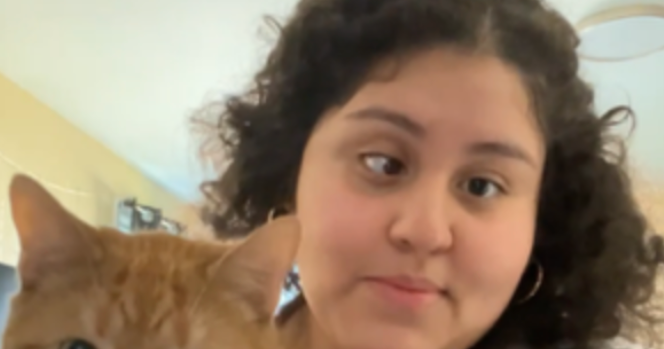A misplaced MRI found a tumor on her spine. Doctors removed it through her eye in a first-of-its-kind surgery.

Karla Flores was only 18 years old when she began experiencing double vision, a troubling symptom that led her on a journey to find a diagnosis. After struggling to pinpoint the cause of her vision issues, she finally saw an ophthalmologist who referred her to a neurosurgeon for further evaluation.
At the age of 19, Flores received a shocking diagnosis – a chordoma was discovered wrapped around her brain stem. Chordomas are rare, with only about 300 cases diagnosed each year in the United States. These slow-growing, malignant tumors posed a serious threat to Flores’ health as they were putting pressure on multiple cranial nerves.
Dr. Mohamed Labib, a neurosurgeon at the University of Maryland Medical Center, led Flores’ treatment and developed a complex surgical plan to remove the tumor without damaging the delicate nerves. However, during an MRI before the first surgery, a second chordoma was discovered at the top of Flores’ spine, dangerously close to her spinal cord. This second tumor, if left untreated, could have resulted in paralysis.
Despite the unexpected discovery, Labib proceeded with the surgeries to remove the first chordoma. The tumor was successfully removed through a traditional neurosurgery and a procedure that went through Flores’ nose. Following the first surgery, Labib faced the challenge of removing the second chordoma, which was located in a difficult-to-reach area near the spinal cord.
After weeks of careful planning and practice, Labib devised a unique surgical approach that involved entering through the side of Flores’ eye, a technique he had previously used in a different context. This innovative “third nostril” approach allowed Labib and his team to successfully remove the second chordoma without causing additional harm.
The lengthy and intricate surgery, which lasted about 20 hours, involved rebuilding Flores’ eye socket with a titanium plate and reconstructing her cheek with bone from her hip. Despite the complexity of the procedure, the chordoma was completely removed, and Flores began her journey to recovery.
Following the surgery, Flores underwent radiation treatment to ensure the cancer was eradicated from her body. She also received rehabilitative therapy to address nerve damage that affected her left eye movement. Today, nearly a year after completing treatment, Flores shows no evidence of cancer and continues to work on regaining full function in her eye.
Looking towards the future, Flores hopes to pursue a career as a manicurist once she has fully recovered. However, she faces the challenge of overwhelming medical bills, totaling around $600,000. A GoFundMe campaign has been set up to help with her expenses, but the support has been limited.
Despite the obstacles she has faced, Flores remains resilient and determined, taking each day as it comes and celebrating each small victory along the way. Dr. Labib is hopeful that the innovative surgical approach used in Flores’ case can pave the way for treating other challenging tumors in the upper cervical spine, offering new hope for patients facing similar diagnoses.





